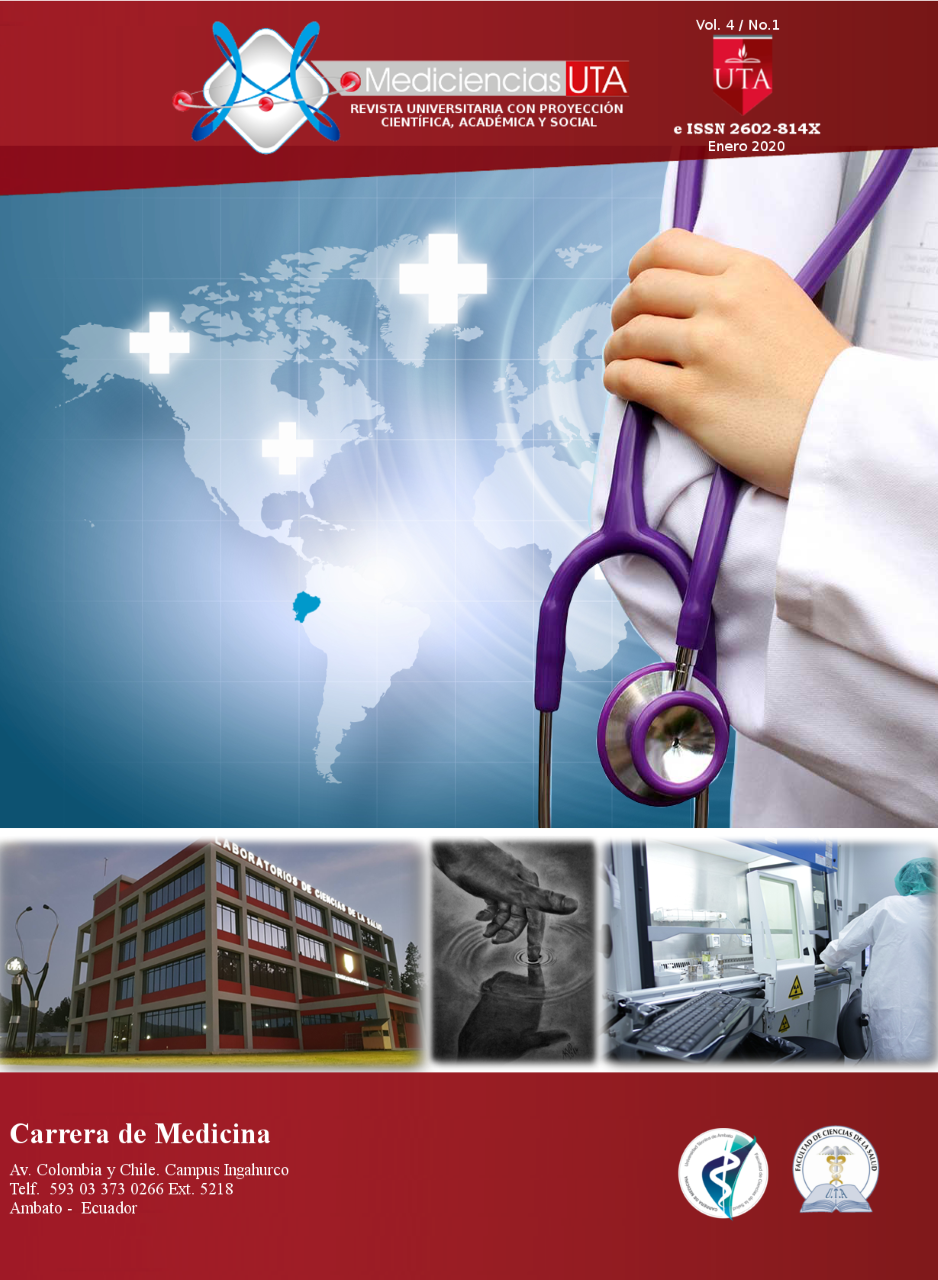External carotid arteriovenous malformation and phystula
Main Article Content
Abstract
Introduction: Arteriovenous malformations at the level of carotid arteries either external or internal and according to their flow do not maintain a high incidence, therefore, there are no data or databases that help us with specific statistics and aids in diagnosis and treatment of them. A caroid-cavernous fistula results in abnormal communication between arteries and veins within the cavernous sinus and can be classified as direct or dural and indirect or low flow. Direct carotonic fistulas are often of traumatic origin and can also be caused by rupture of an aneurysm, Ehlers-Danlos syndrome type IV, or iatrogenic intervention, hypertension, fibromuscular dysplasia, Ehlers-Danlos type IV and dissection of the Internal Carotid Artery.
Objective: To describe a clinical case of Arteriovenous Malformation and External Carotid Fistula.
Material and methods: A descriptive, retrospective, clinical case presentation study.
Results: It describes a clinical case of female patient of 28 years of age inhabitant of Amazonian area that presents long malformation at the hemiface level which has been increasing in size over the years; despite the early realization of diagnostic methods the pathology could not be confirmed and therefore the appropriate treatment has not been applicable significantly increasing complications and appearing injuries of concomitant organs that have worsened the picture.
Conclusions: In the facial cervix, avourian malformations are rare and remain a controversial topic. The main etiology at this level is trauma, followed by infections, puberty, pregnancy, but they are also common in spontaneous people of congenital origin. Treatment is controversial, and not clearly established, is a decision made between patient, surgeon and interventional radiologist. The only definitive treatment is a radical complete excision of the entire tumor, accompanied by its risks. These include the high rate of intraoperative bleeding (sometimes uncontrollable due to the presence of vital structures such as carotid arteries, vertebral andsubclavian, and jugular veins). There is also the likely recurrence, because it depends on a large number of vessels and a radical resection of the malformation is necessary. Finally, the aesthetic sequelae that can lead to recession, needing microvascularized or pediculated flaps, since free flaps produce changes in vascularity and fibrosis that contribute to an ischemic environment with the consequent Recurrence.



